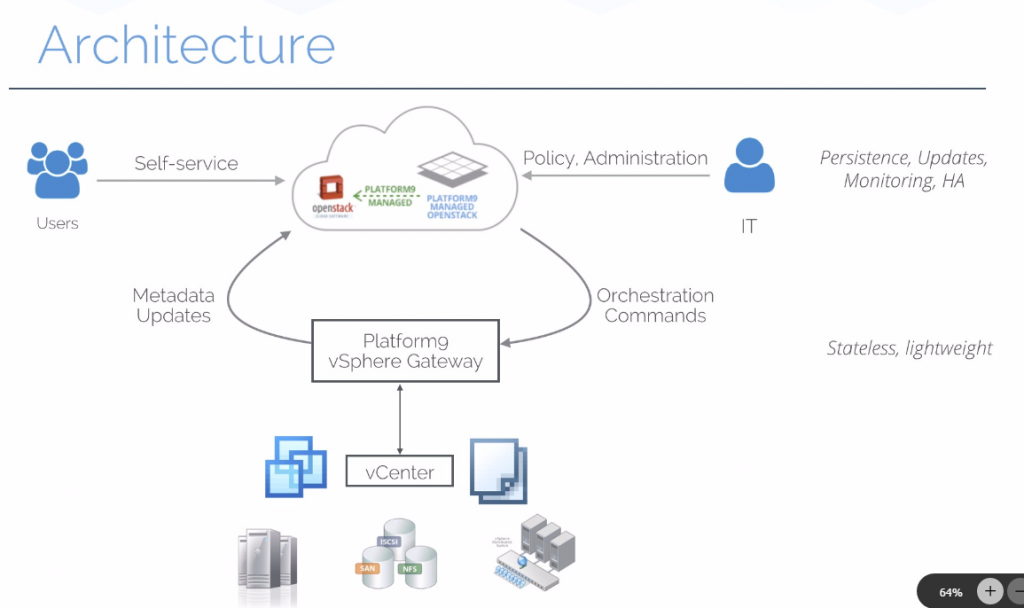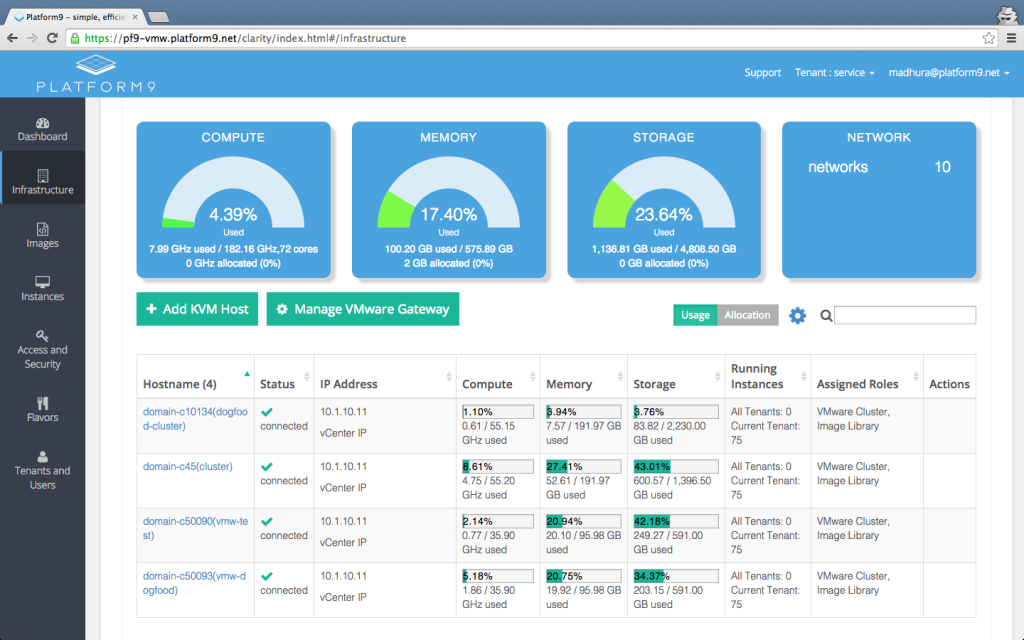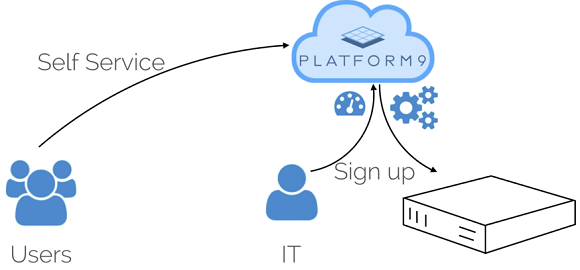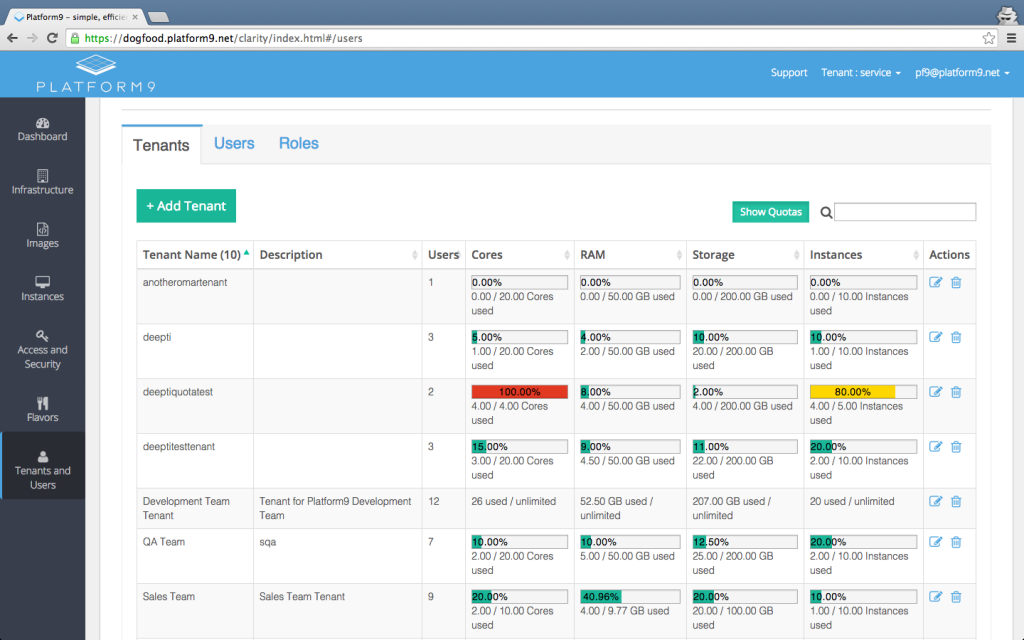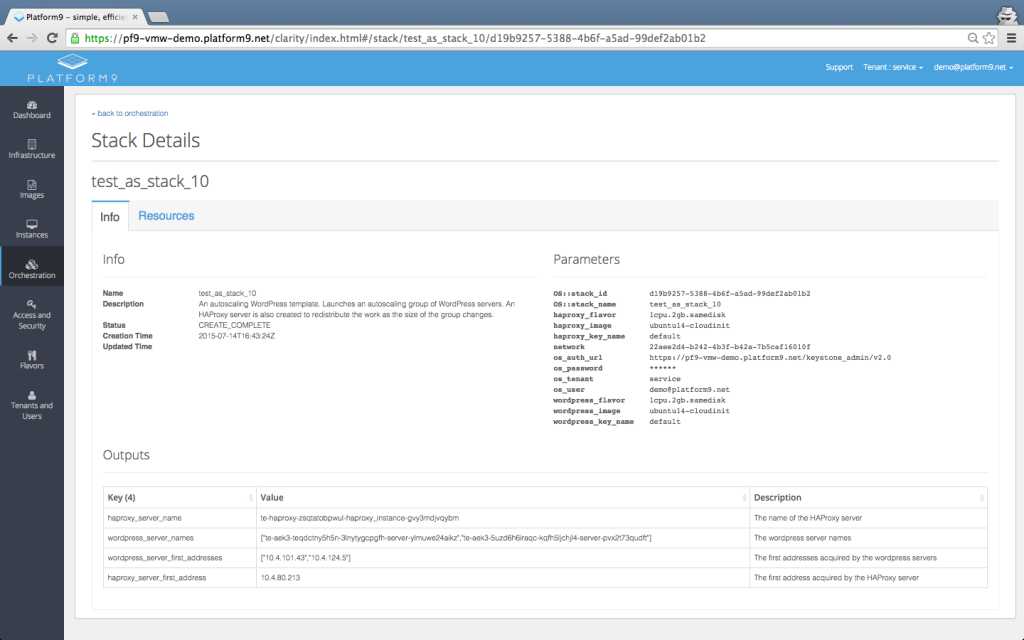Platform9 have an interesting product for making private cloud easy using a public cloud enterprise service (according to a SaaS model) based on OpenStack platform (we can call it as an OpenStack as a Service). They were very active in the past years and part of several industry level events, included latest IT Press Tour and Virtualization Field Day.
Platform9’s mission is to make private clouds easy for any enterprise at any scale, and spend less than 5 minutes to get a fully operational environment. Actually they are fully supporting KVM hypervisors, but the final target will be support any Hypervisor and/or container, any server, any storage, any network.
After a beta period, now they are announcing the GA support for VMware vSphere (in this initial stage vSphere 5.1 e 5.5).
Similar to the KVM architecture, you have a dedicated (one for each customer) OpenStack Management platform (the OpenStack controller) that can handle one more vCenter Server.
In order to provide a secure communication a Platform9 vSphere Gateway is paired with each vCenter (1:1) and act as a local executor for VMware commands. This gateway is completely stateless (the state is in the OpenStack controller), so you can simple redeploy or choose the simplest HA solution (like VMware HA). Also note that it can update changes by other entities: they are automatically discovered and reconciled in order to have an updated and consistent inventory.
It discovers the vSphere environment, not only in term of clusters, datastores, portgroups (standard or distributed, and soon also with NSX support), but also in term of template images, VM Instances. And will periodic refresh it.
Note that the OpenStack controller is not a single point of failure or a bottleneck: Platform9 will manage it correctly for availability, security, patching, data protection. And for scalability it will scale automatically “behind the scenes”.
But why use Platform9 for managing your vSphere infrastructure, rather than the existing vCenter Server?
First simple reason could be self-service provisioning for developer productivity, or for multiple internal organizations:
In can be a single Pane across vSphere and KVM and in the future also Docker.
Another reason (similar and related to the previous one) is to provide multi-tenant support:
But in my opinion the most interesting anwser is to provide new management and automation capabilities that vCenter is not able to provide.
For example a better VM placement automation, considers workload tier and capacity availability.
But also an automatic application sizing using Heat where auto-scale up based on increased VM resource utilization and auto-scale down based on decreased VM resource
utilization:
See also:

